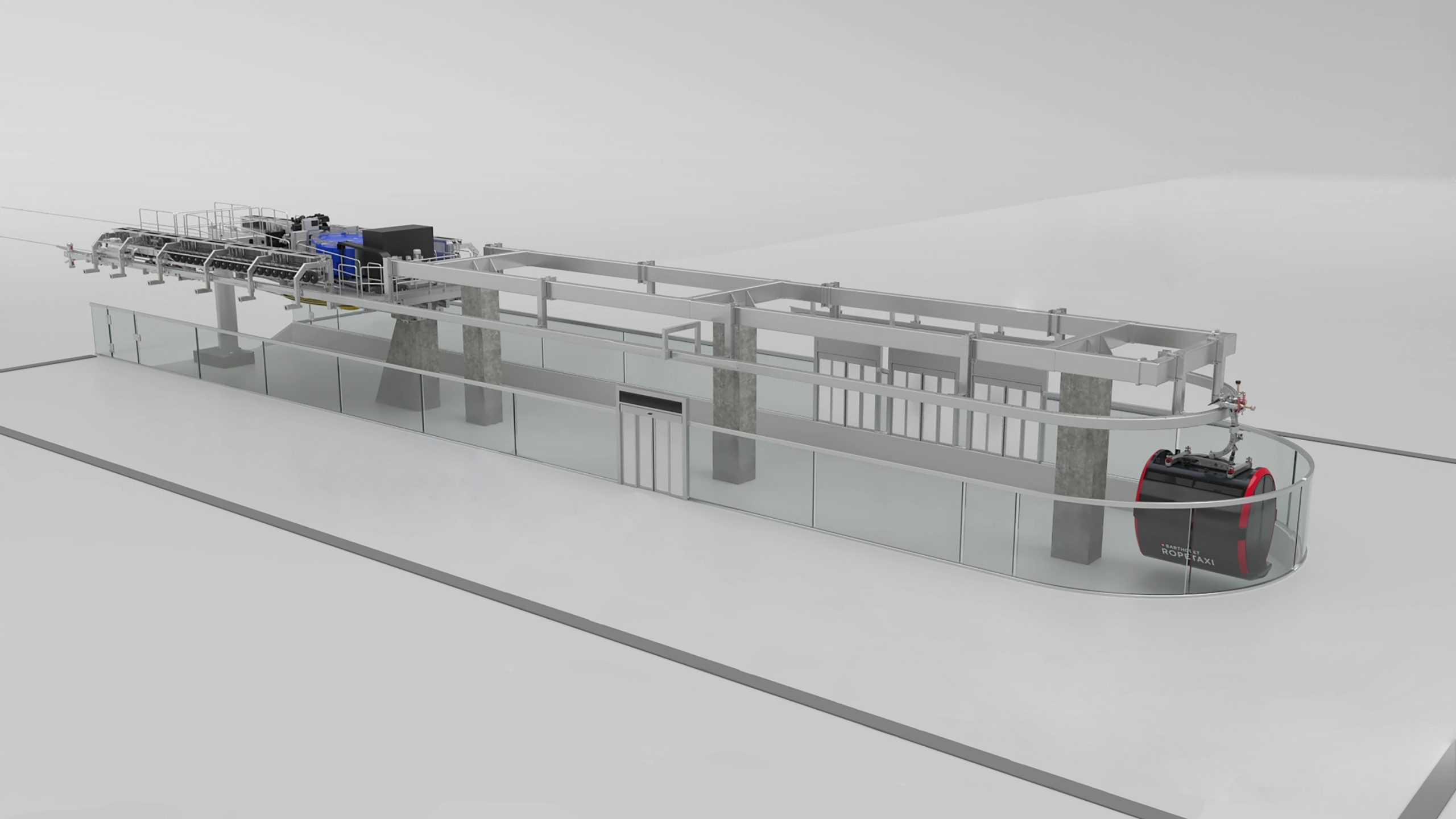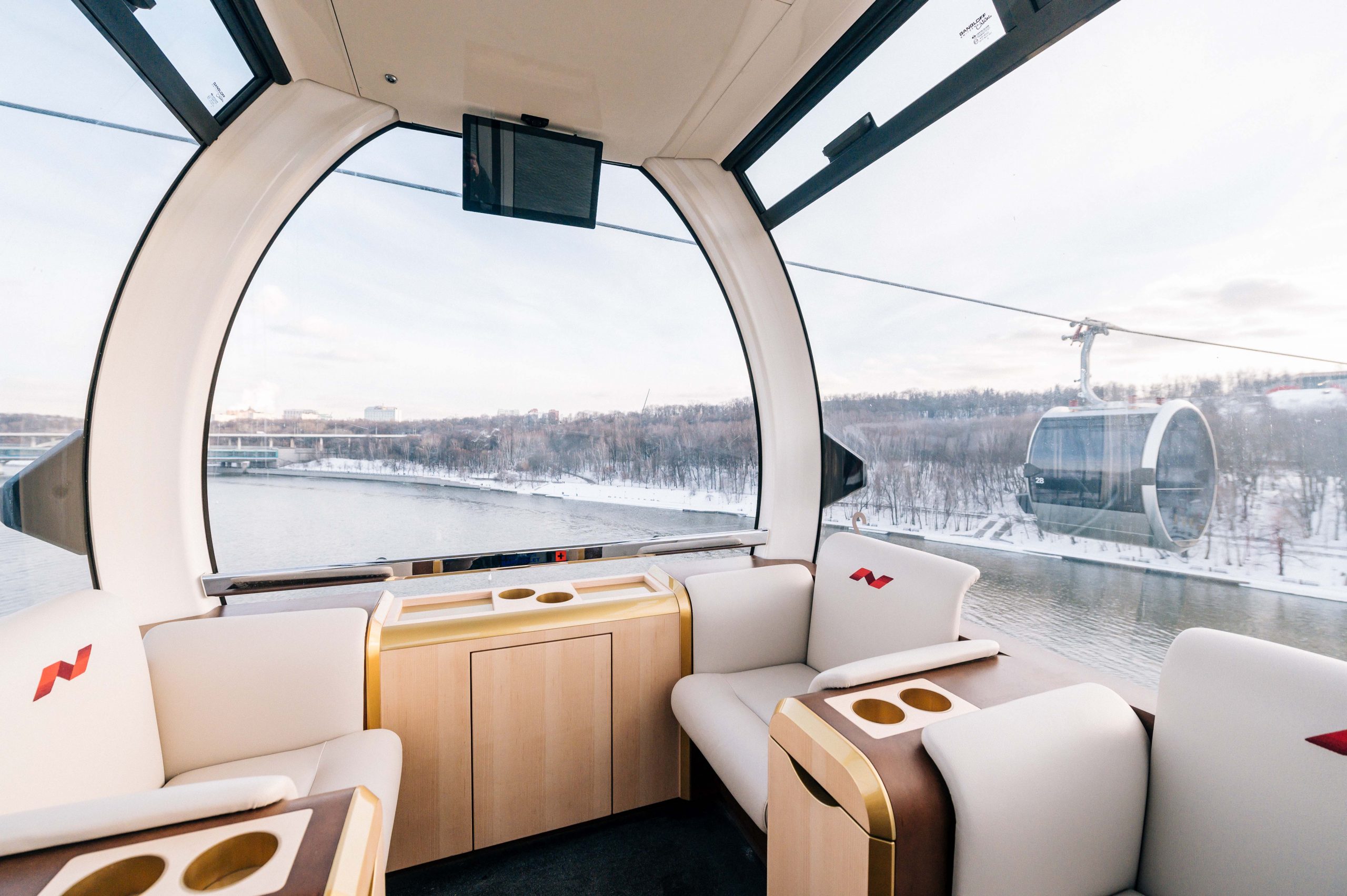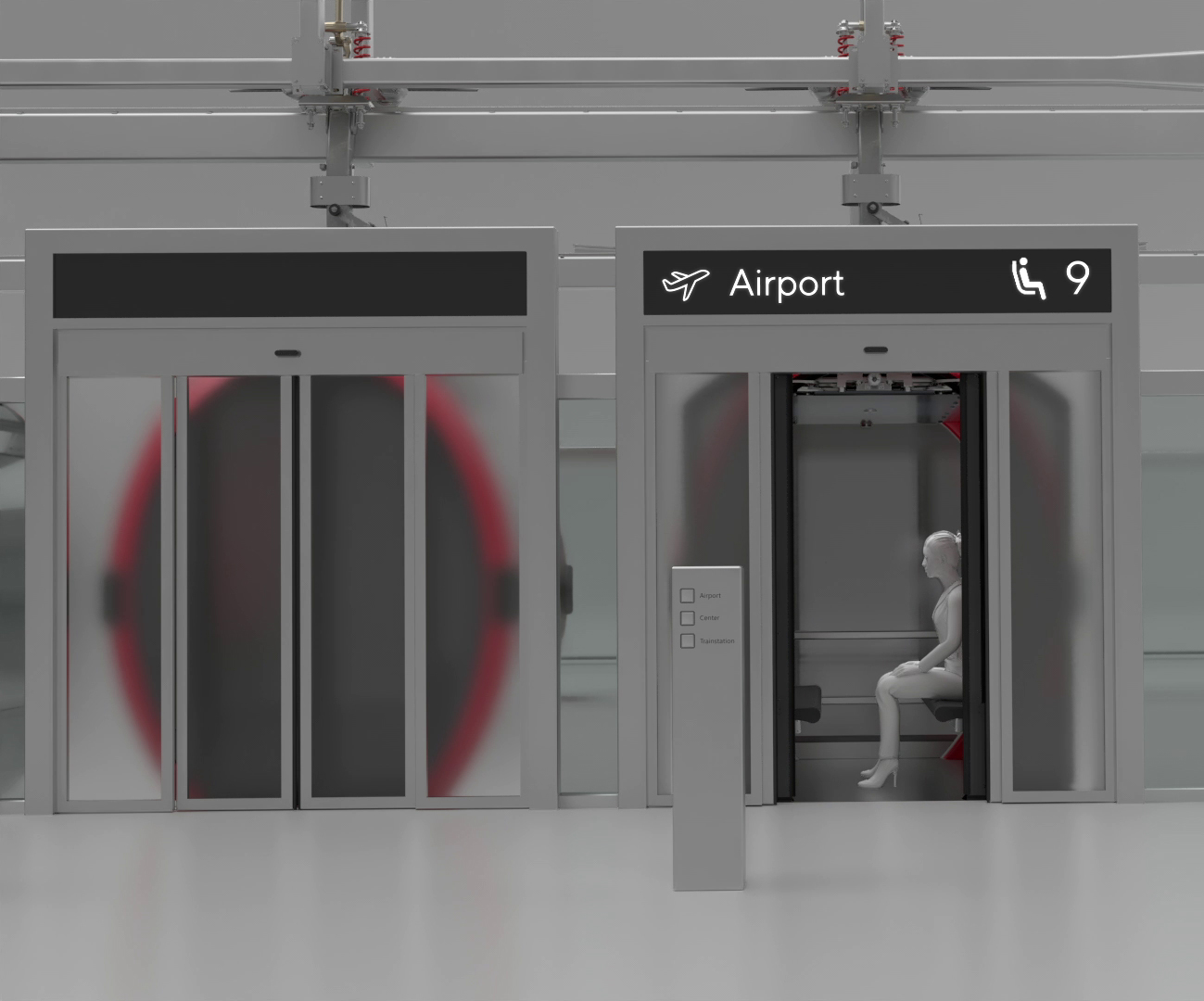
Cableway & Technology, Cities, SI Urban 1/2021, Tourism
Ropetaxi – a world first from Bartholet
Essentially, this world first from BARTHOLET facilitates autonomous driving of the gondolas in the stations, by means of a separate eMotion drive. Points on the track inside the station allow the formation of entire cable car networks and flexible route combinations.
Destination selection at the touch of a button before boarding also allows unhindered travel directly to the destination, without the need to change vehicles. Safe boarding and alighting with stationary gondolas creates the basis for unmanned operation. The rope taxi opens up a multitude of new possibilities.
New drive technology
Operation of the rope taxi is characterised by the same high level of safety as a current detachable system. Transport along the route still continues along the cable, and the acceleration and deceleration process in the stations remains guaranteed by means of tyre conveyors. However, all the other tyre conveyors in the station bypass and in the boarding area are omitted, which ensures quiet operation as well as substantially reducing the quantity of components installed and their maintenance cost. All that remains is the running rail, which further improves the process reliability.
On the rope taxi, forward movement of the gondolas in the stations at 1 m/s is powered by eMotion, the new drive from BARTHOLET. The clip design here corresponds to the latest generation, Swiss Performance, and is additionally equipped with two redundant drive units for the system.
The power supply required for self-propelled operation comes from recuperation; as the vehicle slows when entering and accelerates when leaving the station, the kinetic energy is converted into electrical energy and stored. In addition to the two motors on the clip, each vehicle is equipped with two redundant batteries, which respectively allow autonomous driving for up to an hour.
Smart control
The process control system allows interconnected processing of all movements and boarding in the correct, stationary gondola is controlled by means of smart passenger flow distribution with admission displays. For optimum capacity use, the departure is automatically tailored to the number of passengers, which is recorded as they board.
Safe boarding takes place via double access doors, which are monitored visually, like a lift. After leaving a gondola in the boarding area, the gondolas behind move up autonomously. This ensures that there is always a vehicle present in the boarding area. The quick-changing points in the stations are set according to passengers’ choice of destination. This means that branches can even be covered without changing vehicles. All gondolas have a separate, independent control system for the motors and for monitoring the sensors. In addition, they are fitted with distance sensors to detect other vehicles and objects on the track and to stop automatically.
So that operating safety is fully guaranteed, BARTHOLET has developed a new type of evacuation system, which can remove the gondolas from the station circuit in an emergency.
Fist Ropetaxi in Flims Laax
Reto Gurtner, Chairman of the Board at Weisse Arena Group from Flims Laax Falera, is also impressed by the new operating concept from BARTHOLET and has placed an order for construction of a rope taxi cable car with five sections. The planning work is in full swing, so that this global innovation can begin operation at the touch of a button at the start of the 2022/23 winter season.
Vehicle
The entrance area is physically separate from the route through the station. This means that the gondola can be stationary in the boarding and alighting position. The fully barrier-free access is therefore not only easy for passengers with pushchairs, sports equipment and luggage; it also allows older people to board with no rush. For the first time, a circulating cable car is therefore truly suitable for people with impaired mobility and for visually impaired people.
The equipment in the gondolas can be adapted to suit customers’ individual needs. By tracking each individual vehicle, the rope taxi can also identify and control specific gondolas, for personal use or a “fast lane”.
Efficiency
The cable car is already one of the most environmentally friendly means of transport, not least owing to its long service life. An analysis has revealed that the rope taxi concept would mean up to 50% of empty trips could be avoided, as the vehicle runs only when passengers board.
The number of coupling processes is therefore also halved and there is less wear and strain on all parts. When running empty, the cable speed is reduced. In combination with energy recovery through recuperation, the rope taxi stands out for having up to 50% lower energy consumption as well as significantly reduced operating and maintenance costs.









